The flight of Shenzhou-2
Notes by Sven Grahn
Contents
Launch
and initial orbit
Shenzhou-2 was launched from
the Jiuquan Satellite Launch Center in the Gobi
desert at about 1700:03 UT on 9 January 2001. (See map below). The initial
orbit of was 196.5-333.8 km.
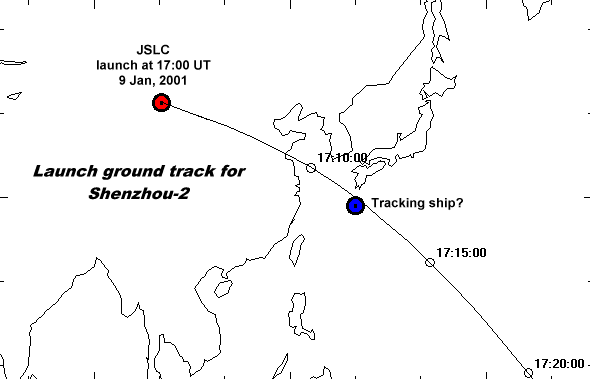
Maneuver
summary
At about 1325 UT on 10
January the orbit was changed to 327.7-332.7 km (nodal period = 91.041
min) - see picture below. At about 1220 UT on 12 January a small "tweak"
burn took place to achieve an orbit at 329.3-339.4 km (nodal period = 91.126
min). A third burn took place on 15 January 2001. This burn raised the
orbit to a period of 91.181 minutes (328.7-345.4 km).
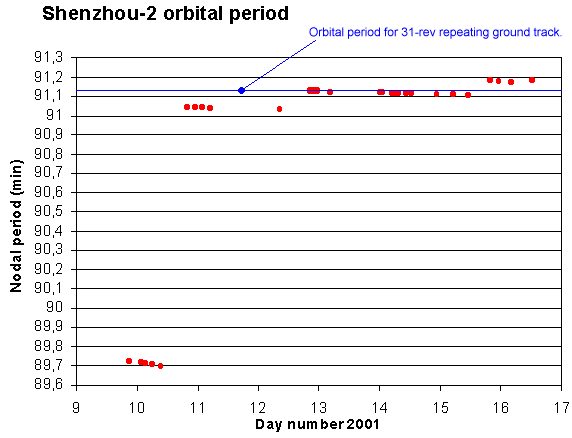
Repeating
ground track
At the 42.6 degree inclination
of Shenzhou-2 the orbital period 91.103 minutes leads to a ground track
that repeats every 31 orbits. The maneuver took place on a pass that is
identical to that of the landing orbit of Shenzhou-1. Therefore,
every two days (31 orbits) Shenzhou-2 will pass along the same ground track
that Shenzhou-1 used to land. Thus, we may assume that the flight will
last an odd number of days (this turned out to be true since the craft
landed after almost 7 days).
Maneuver
locations
Interestingly, the first maneuver
took place exactly on top of one of the locations for a tracking ship during
the flight of Shenzhou-1. (See map below.
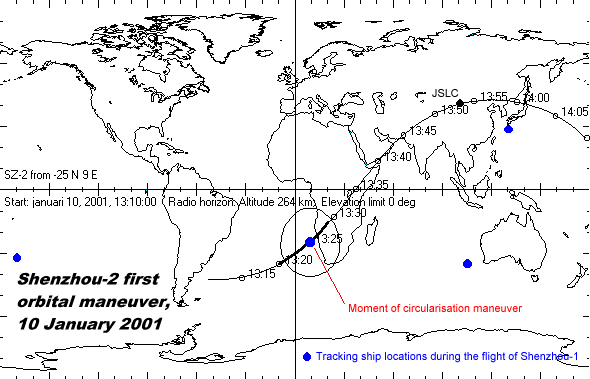
The second maneuver also
took place near this point, actually just before the craft appeared above
the horizon of the tracking ship (if it was at the same place as during
the flight of Shenzhou-1). The third maneuver, the day before landing,
probably took place on a pass over the same tracking ship - at about 1015
UT.
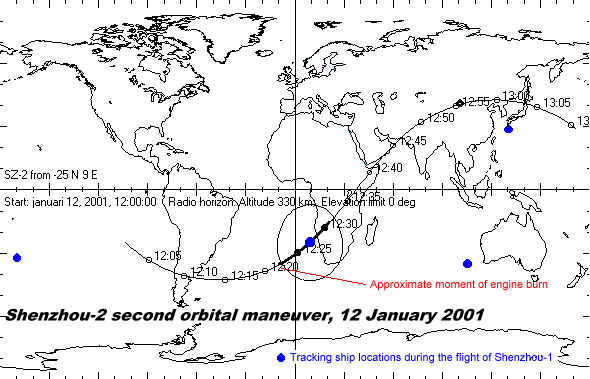
The
landing orbit
The landing orbit is shown in
the figure below. The exact landing spot is unknown, but as in the case
of Shenzhou-1 the craft passed directly over the JSLC launch site before
touchdown in Inner Mongolia.
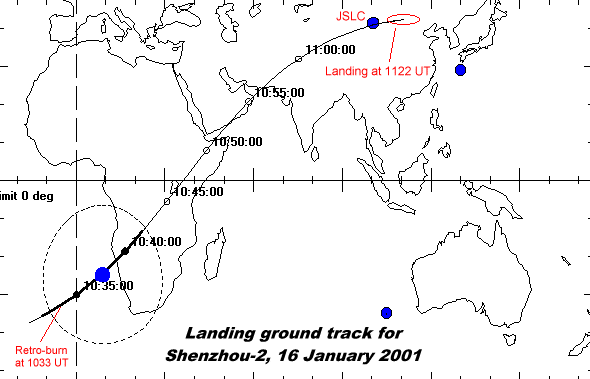

 Back to Space History Notes
Back to Space History Notes




